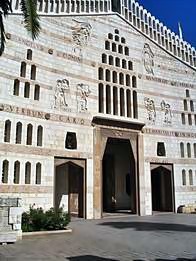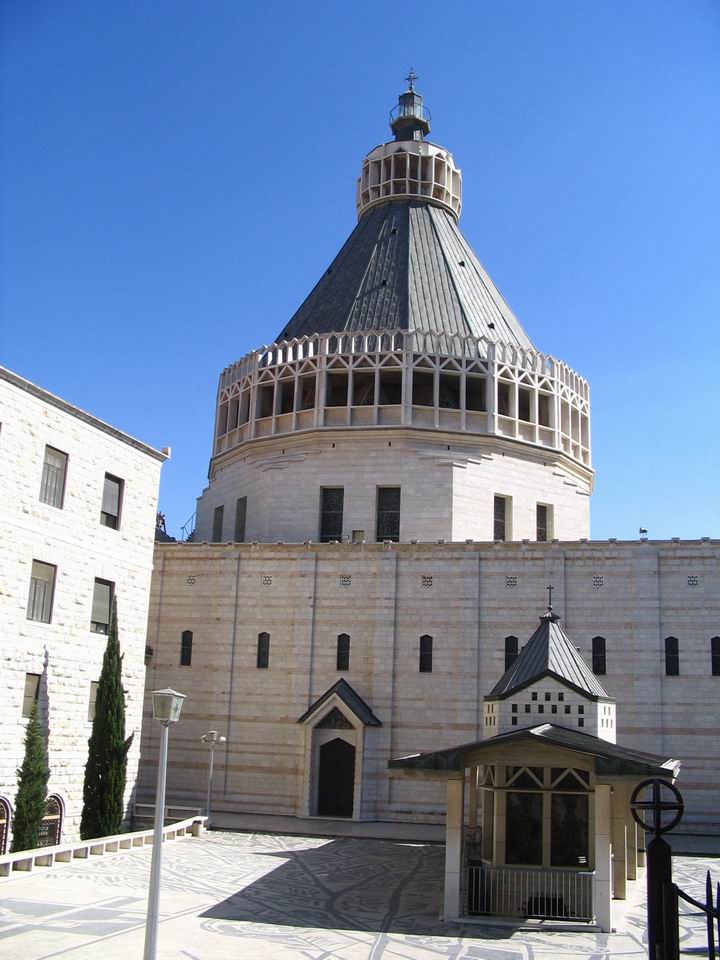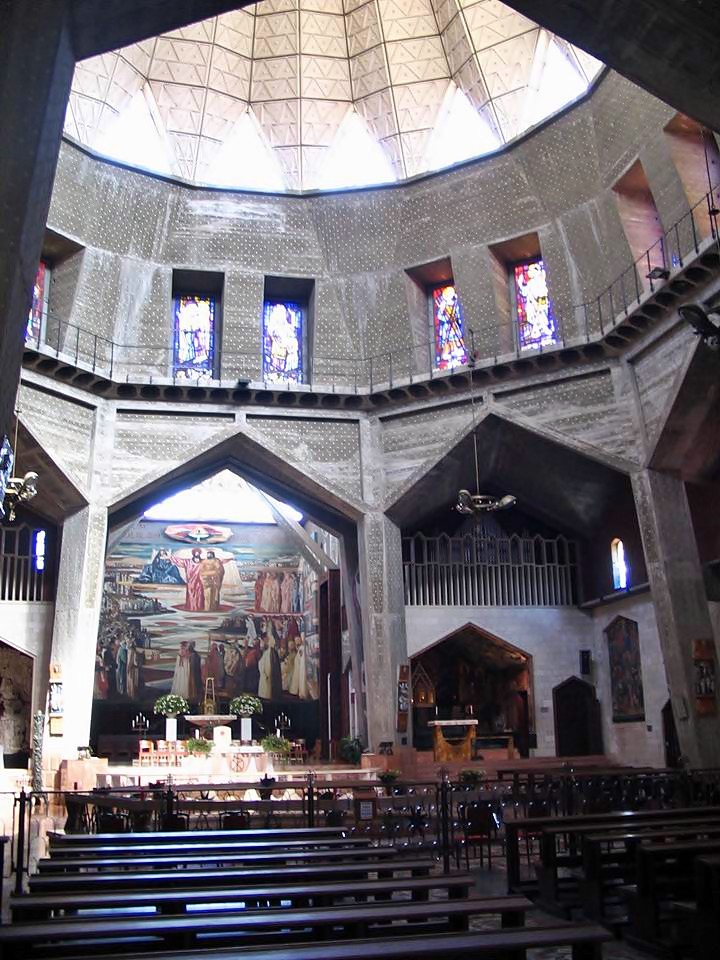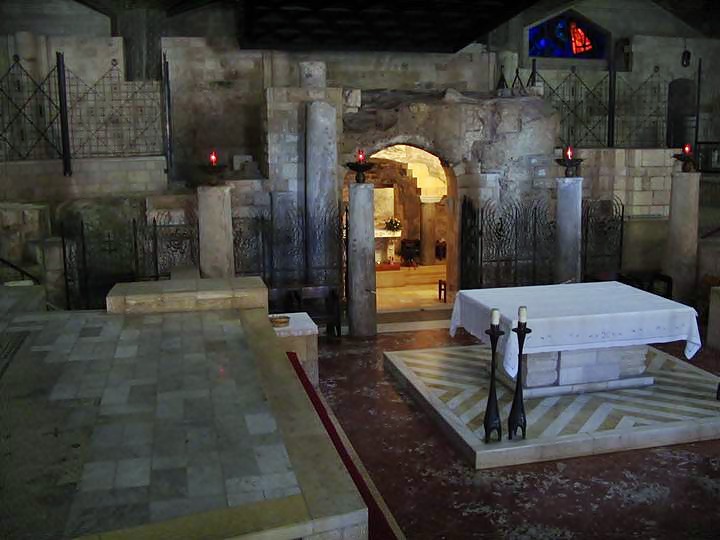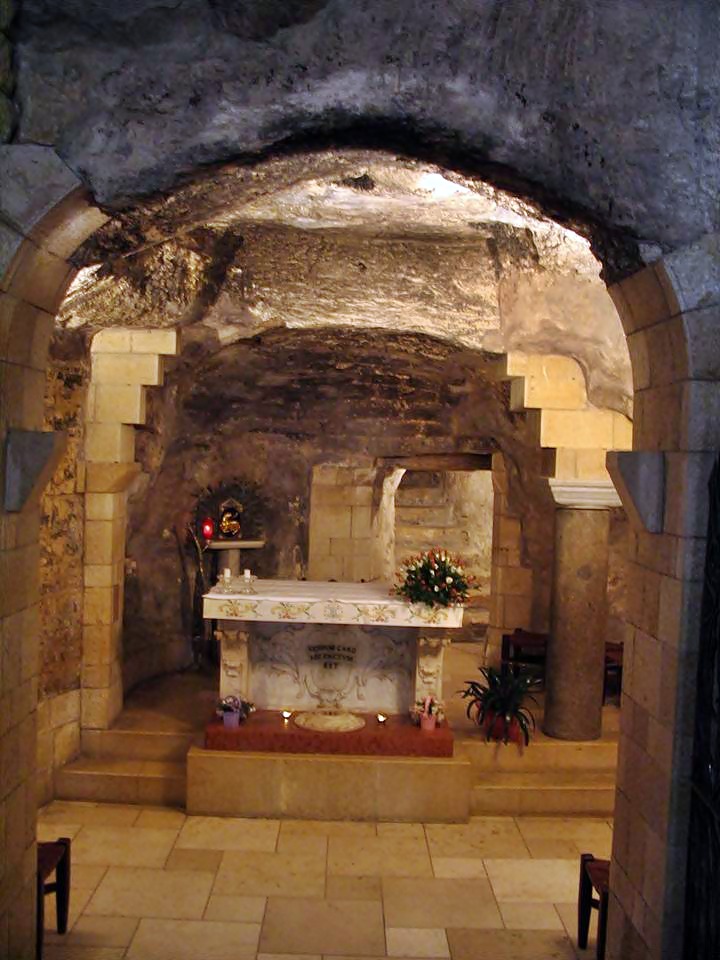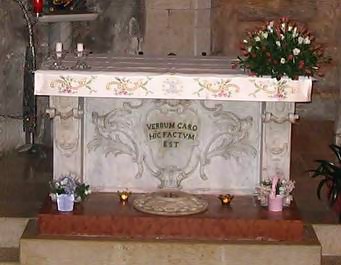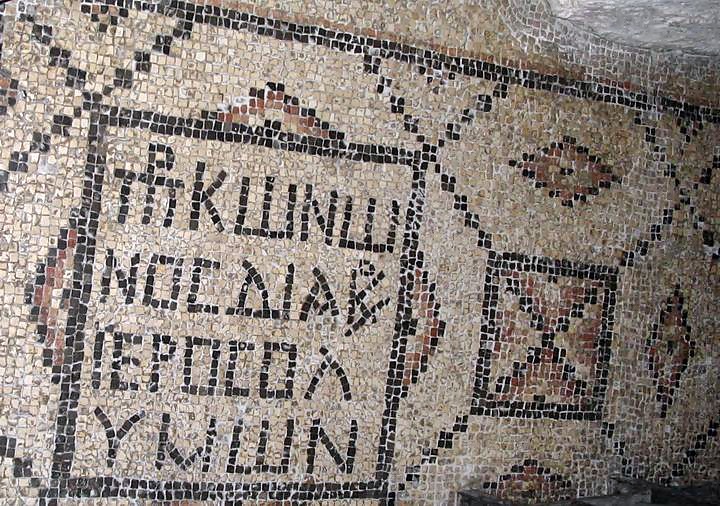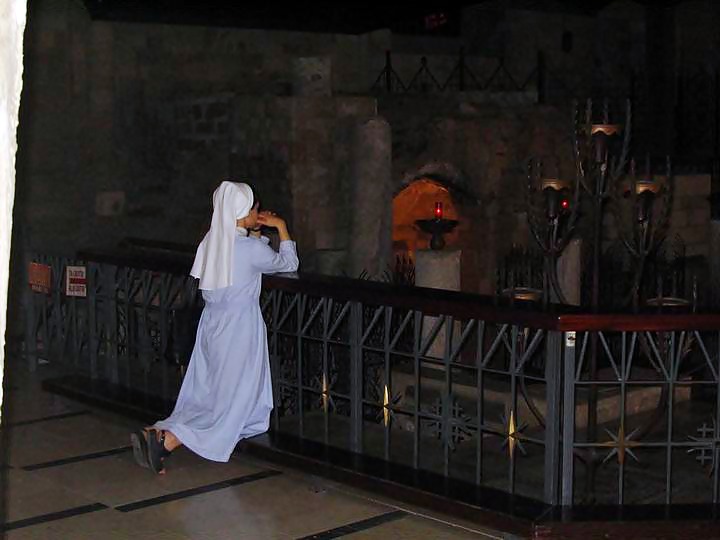This church in Nazareth is one of the Holiest Christian sites. It stands in the site that was believed to be the house of Mary, where she was announced that she will give birth to Jesus.
Home > Sites > Nazareth > Basilica of Annunciation
This page provides more details on the Basilica of Annunciation.
Contents:
Location
History
Photos
* Upper Church
* Lower Church
Biblical
References
Links
Location:
The Church is located in the center of the City of Nazareth, on Casa Nova Street. It stands over the site that was believed to be the site of Mary’s house, where angel Gabriel appeared and announced to Mary that she is about to give birth of Jesus (Luke 1:26):
“And in the sixth month the angel Gabriel was sent from God unto a city of Galilee, named Nazareth, To a virgin espoused to a man whose name was Joseph, of the house of David; and the virgin’s name was Mary”.
Four earlier Churches were built in the same location and archaeological excavations in this site revealed early Roman settlements.
Aerial View:
The church and its dome is seen on the left-center side. In the center of the photo is a T shaped long structure, with St. Joseph’s church on its right (North) side and Terra Sancta Convent in the middle.
Park the car along the eastern wall of the Church, on the main road in downtown Nazareth. Then, walk up Casa Nova street to the gate of the Church.

The photo is part of a collection of aerial images of BibleWalks’s partner.
History of the place:
These are the highlights along the timeline, with the Church being built for 5 times in the same site:
- Mid 4th century AD Early church; probably an altar in the grotto believed to be Mary’s house
- 340 AD-470 AD Church of the Annunciation was commissioned Emperor Constantine, directed by his Mother, St. Helena, but probably was completed only in 470 AD. It may have been founded by Deacon Canon of Jerusalem, as inscribed on a mosaic.
- 638 AD Arab invasion; destruction of the Church
- 1109 AD Crusaders arrive to the Holy Land; build a new magnificent Church; stay in Nazareth until 1187
- 1187 AD After Horns of Hittim battle, the Arabs butchered the priests
- 1229-1263AD Crusaders return for brief time; Church destroyed by Mamluks (Azzahir Baibars)
- 1620AD Franciscans purchase the ruins; return to occupy the Church (3rd time)
- 1730 Church rebuild (4th time) and enlarged in 1877
- 1955-1969 Church demolished and rebuilt (the current church – the 5th Church), designed by Giovanni Muzio
- 1997-2006AD Friction around mosque built in front of the Church of the Annunciation
A 19th Century illustration of the Church and the surroundings is seen here. The church is the white triple fronted structure.
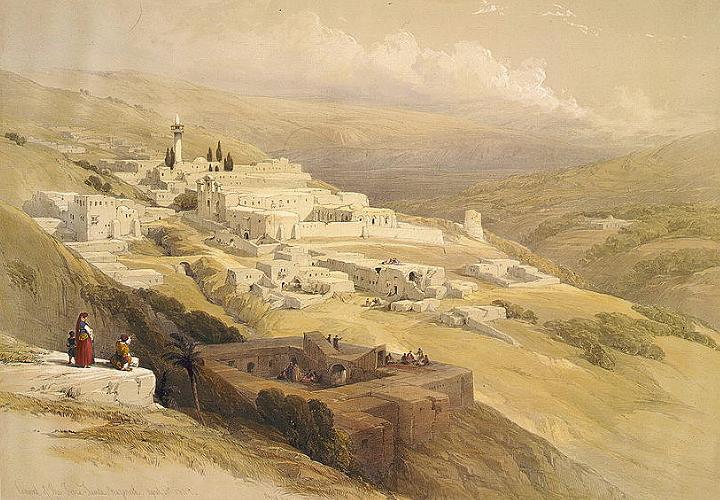
Illustration of Nazareth, by David Roberts, 1839 Library of Congress
Photos:
(a) Upper Church:
A view of the Church of the Annunciation from the back side is shown in the following photo. It is made of 2 levels, and the door is the entrance to the upper level.
Click on the photo to view it in higher resolution…
The Upper Church serves as the local Roman Catholic parish church. Natural light illuminates the church from the stunning high (170 feet) cupola.
(b) Lower Church:
The lower Church is centered around the grotto which, according to the tradition, was the home of Mary and the site of the Annunciation. The remnants of churches from the Crusader and Byzantine eras are seen around the grotto.
The following photo shows the grotto’s interior, with the beautiful 18Th century altar dedicated to the Annunciation (see below). On the right of the altar – an ancient column, probably placed there in the fourth century to mark the place where the angel appeared. Behind it are stairs that lead up to a small cave (called “Mary’s kitchen”) and an exit to the yard.
On the Altar – the words ” Verbum Caro Hic Factum Est” (“Here [hic] the word was made flesh”). This text is from John 1:14: “The Word became flesh and made his dwelling among us. We have seen his glory, the glory of the One and Only, who came from the Father, full of grace and truth”.
A Byzantine mosaic is found on the floor of the small grotto to the west of the Shrine. The 5TH century AD mosaic spells in Greek: “For Conon, Deacon of Jerusalem”, which may have been the founder of the Byzantine church. Deacon is a title of a honorable position in the church.
A nun is seen in the following photo praying at the site, facing the grotto. This site attracts many believers and tourists.
Biblical References:
Luke (1: 26-38)
In this text is the story of the annunciation:
“And in the sixth month the angel Gabriel was sent from God unto a city of Galilee, named Nazareth, To a virgin espoused to a man whose name was Joseph, of the house of David; and the virgin’s name was Mary. And the angel came in unto her, and said, Hail, thou that art highly favoured, the Lord is with thee: blessed art thou among women. And when she saw him, she was troubled at his saying, and cast in her mind what manner of salutation this should be. And the angel said unto her, Fear not, Mary: for thou hast found favour with God. And, behold, thou shalt conceive in thy womb, and bring forth a son, and shalt call his name JESUS. He shall be great, and shall be called the Son of the Highest: and the Lord God shall give unto him the throne of his father David: And he shall reign over the house of Jacob for ever; and of his kingdom there shall be no end. Then said Mary unto the angel, How shall this be, seeing I know not a man? And the angel answered and said unto her, The Holy Ghost shall come upon thee, and the power of the Highest shall overshadow thee: therefore also that holy thing which shall be born of thee shall be called the Son of God. And, behold, thy cousin Elisabeth, she hath also conceived a son in her old age: and this is the sixth month with her, who was called barren. For with God nothing shall be impossible. And Mary said, Behold the handmaid of the Lord; be it unto me according to thy word. And the angel departed from her”.
Archaelogical References:
In the grounds around the Church several archaeological excavations unearthed the earlier remnants of the Churches and the Roman village. These included walls, parts of houses, silos, cisterns which were part of the Roman village. The excavations are visible under the platform of the upper church (you can see a photo of these excavations) .
For more info on these digs:
- Nazareth: Basilica of the Annunciation Archaeological Excavations
Links:
| Check the Annunciation gallery of Mosaics, which are on display in the front courtyard of the church and inside the upper level church. What is interesting in this Annunciation display is that each mosaic bears the characteristics of the contributing nation. For example, the Chinese Mary seems like a Chinese lady, while baby Jesus from Columbia looks South American. It is interesting to see how each nation visualized the annunciation in their own local eyes. | 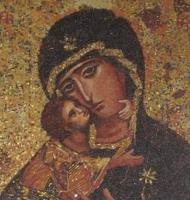
National_Mosaics |
Other pages of Nazareth:
- Nazareth sites Gallery
- Nazareth sites maps
- Mt. Precipice
- Mary’s Well
- St. Gabriel Church
- Yafia (Jaffa of Nazareth)
- Synagogue Church
- Greek Catholic
- Christ Church
- Our Lady of the fright
- Mensa Christi (Jesus’ Table) Church
- St Joseph Church
- Sisters Nazareth
BibleWalks.com – walk with us through the sites of the Holy Land
Nazareth Overview <<<—previous site —<<<All Sites>>>—next Nazareth site—>>> Mosaics in the Basilica
This page was last updated on June 25, 2015 (Added illustration)
Sponsored links:
